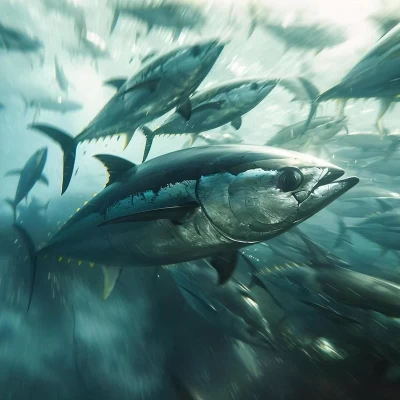Sea bream fishing is an exciting and rewarding activity, perfect for newcomers to the world of angling. Imagine standing on the shoreline at sunrise, casting your line into the crystal-clear waters of Turkey’s coast, and feeling a pull as your first sea bream takes the bait. It’s a moment you won’t forget, and this step-by-step guide is here to make it happen – whether you’ve never picked up a fishing rod or you’re simply looking to sharpen your skills.
Ready to get started? Let’s break it down step by step.
Essential Gear for Beginners
Before you hit the water, it’s important to have the right gear. But don’t worry, it doesn’t have to be expensive or complicated! Here’s a simple setup that will get you fishing without breaking the bank
Bare Essentials:
- Rod: A 7–8 ft light spinning rod. This will help you control your casts and easily reel in your catch. Try options like the Shimano Catana or Daiwa Crossfire—both affordable and beginner-friendly.
- Reel: A 2500–3000 size spinning reel, pre-spooled with 8–10 lb monofilament line. Monofilament is forgiving for beginners and easy to handle.
- Hooks: Size 6–8 circle hooks (preferably barbless). These hooks are gentle on the fish and make release easier.
- Sinkers: 0.5–1 oz egg sinkers. These will help your bait reach the bottom where sea bream often feed.
- Extras: A simple tackle box, pliers, and a folding net.
Quick Tip: Many Turkish tackle shops offer rod/reel combo kits that are both budget-friendly and perfect for beginners. Look for a bundle for extra savings!
Choosing the Right Bait
For beginners, sticking with natural bait is key. It’s straightforward, effective, and easy to manage.
- Fresh Shrimp: Widely available at local markets. Thread a shrimp through the tail to keep it secure on the hook.
- Squid Strips: Ask your local fishmonger to slice squid into pieces. They’re a great option for attracting sea bream.
- Bread: For surface-feeding species like Saddled Sea Bream, mold a small piece of bread around the hook.
Avoid Overcomplicating: Skip the fancy lures at first. Stick to natural baits like shrimp and squid until you feel more comfortable.
Want more bait options? Check out our Best Baits and Lures for Sea Bream Fishing guide.
Picking Your First Fishing Spot
Finding the right spot is crucial for beginners, and luckily, there are plenty of easy-access locations along Turkey’s coast.
Beginner-Friendly Locations:
- Piers/Jetties: Great for beginners with easy access. Try the piers in Kuşadası or Çeşme for high chances of success.
- Sandy Beaches with Rocks: Sea bream love the mix of sand and rocks, where they can find food. Altınkum Beach is a fantastic example.
- Estuaries: Calm waters near river mouths are great for sea bream. Head to areas like the İzmir Coast for quiet, productive fishing.
Safety First:
- Always wear non-slip shoes when walking on wet rocks.
- Keep an eye on the tides and check tide charts to avoid getting stranded.
Step-by-Step Fishing Technique
Now that you’re set up, it’s time to start fishing! Follow these simple steps:
A. Setting Up Your Paternoster Rig
- Step 1: Tie a paternoster rig, which is just a line with two hooks above a sinker.
- Step 2: Attach a shrimp or squid strip to each hook.
- Step 3: Cast the rig about 10–20 meters into the water, aiming for areas with visible rocks or seagrass.
B. Detecting a Bite
- Small Twitches: If you notice the rod tip twitching, it could mean a sea bream is nibbling.
- Steady Pull: Wait for a steady pull or bend in the rod before you start reeling in. Don’t rush it!
C. Landing Your Catch
- Reel Slowly: Keep tension on the line to avoid losing the fish.
- Use a Net: Gently scoop the fish into the net to avoid injuring it or losing your catch.
Identifying Your Catch
It’s important to know which fish you’re reeling in. Here are some of the most common sea bream species:
- White Sea Bream (Diplodus sargus): Silver with dark stripes, the most common sea bream.
- Saddled Sea Bream (Oblada melanura): Recognizable by the black spot near the tail.
- Annular Sea Bream (Diplodus annularis): Small, with a golden ring around the tail.
What to Do:
- Measure your catch against local size limits (e.g., Gilt-head Sea Bream must be at least 20 cm).
- Release any undersized fish gently.
Check out our Sea Bream Species in Turkish Waters guide to learn more.
Avoiding Common Mistakes
Fishing can be frustrating at times, but don’t let these common mistakes hold you back:
- Overcasting: Start with shorter casts (20–30 meters) until you get the feel for it.
- Fishing During the Wrong Tide: Sea bream feed most actively during rising tides. Check tide charts before you go.
- Impatience: Don’t rush to recast. Wait at least 10–15 minutes before giving up on a spot.
Beginner’s Checklist for Your First Trip
- Rod, reel, and line (pre-spooled).
- Circle hooks (size 6–8) and sinkers.
- Fresh shrimp or squid bait.
- Tide chart (check rising tide times).
- Snacks, water, and sunscreen!
Frequently Asked Questions
What if I don’t catch anything?
Don’t worry! Try adjusting the depth of your bait or moving to a new spot. Sea bream often travel in groups, so where there’s one, there are usually more.
Can I fish from a public beach?
Yes! Just make sure you’re fishing in non-swimming areas and follow any local regulations.
Do I need a fishing license in Turkey?
For shore fishing, no license is needed. However, boat fishing may require a permit.
In conclusion, you’re all set to begin your sea bream fishing journey! Remember, every angler was once a beginner, and patience is key. Keep practicing, enjoy the experience, and soon enough, you’ll be reeling in your catch with confidence. For even more tips, dive into our Ultimate Guide to Sea Bream Fishing.








